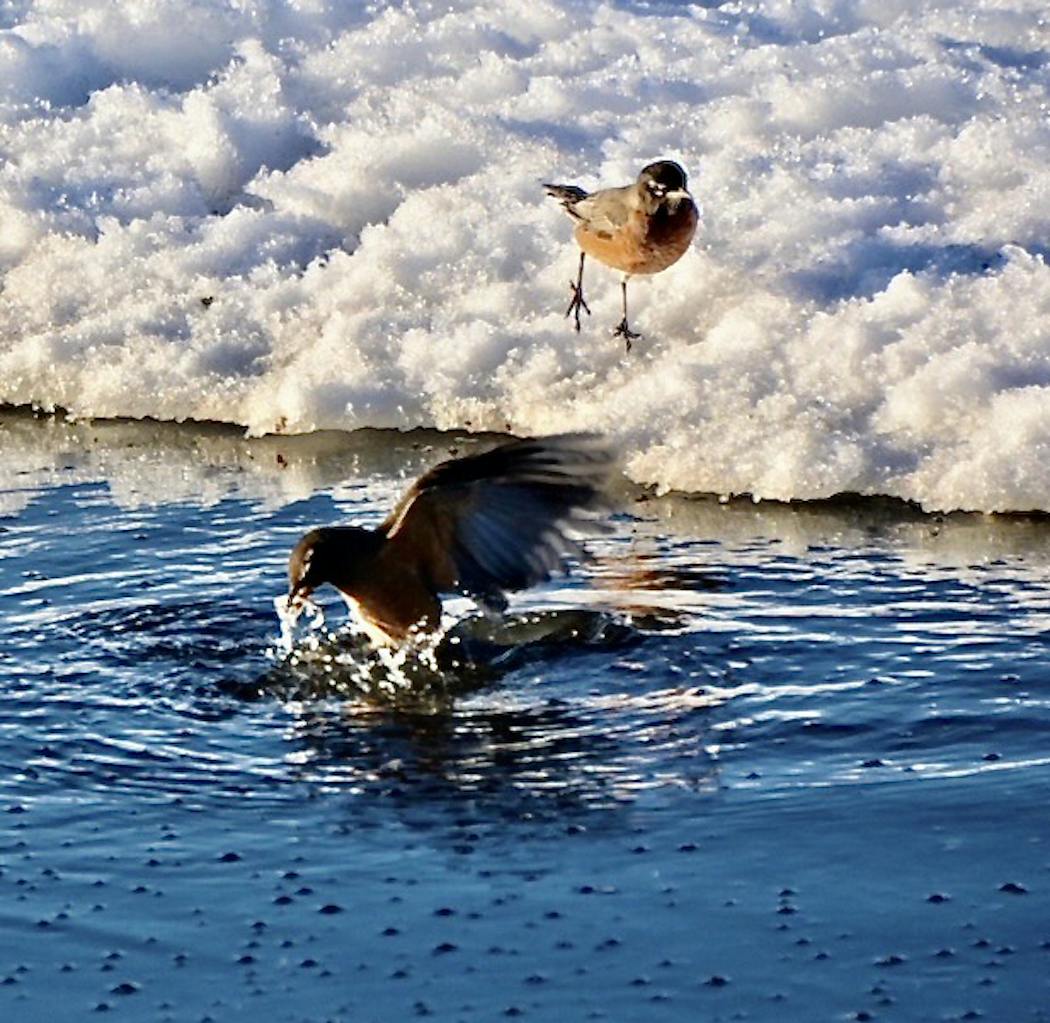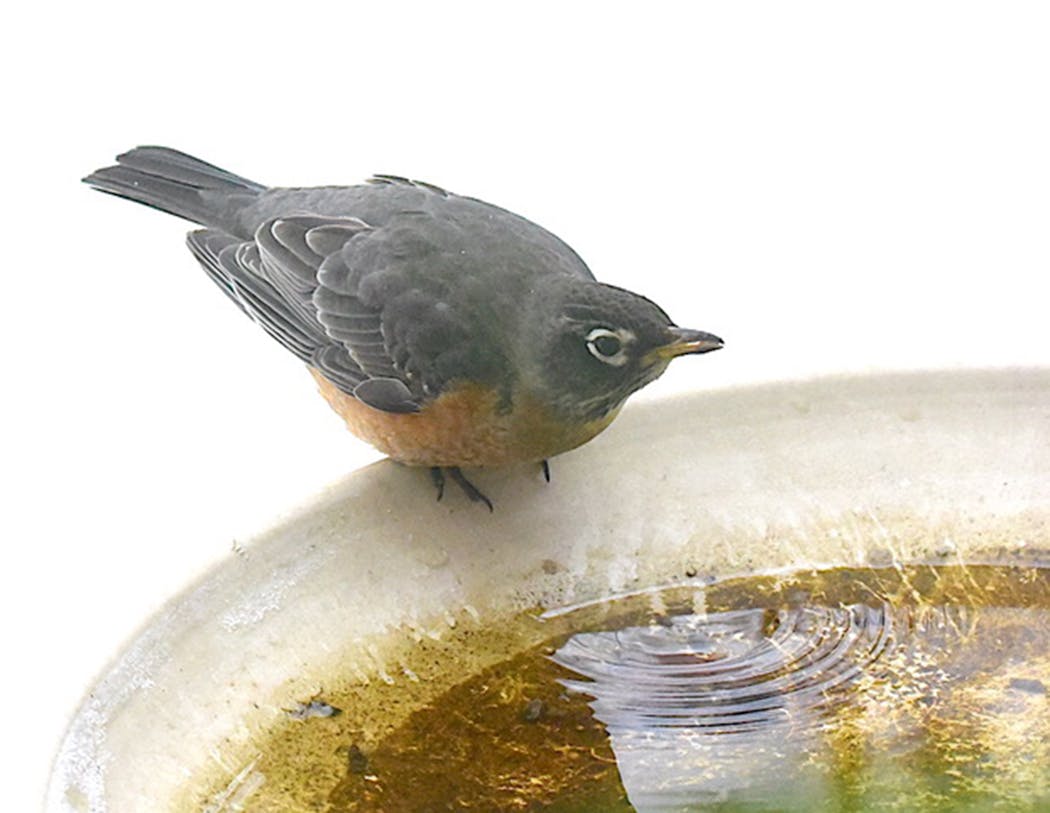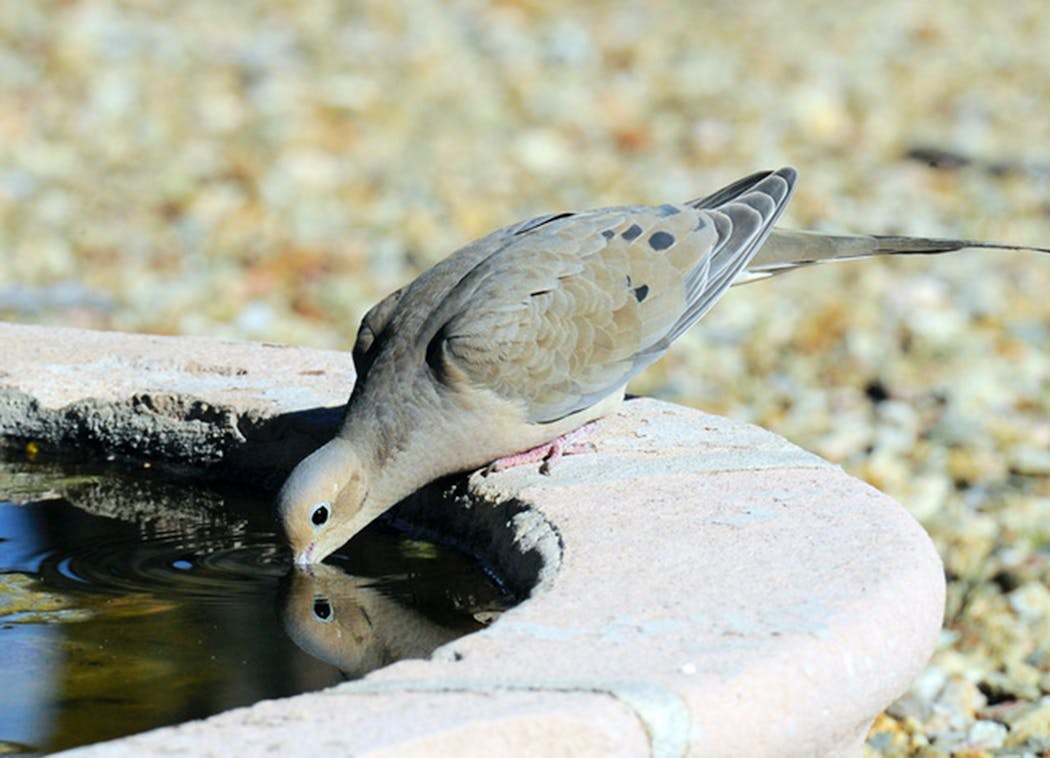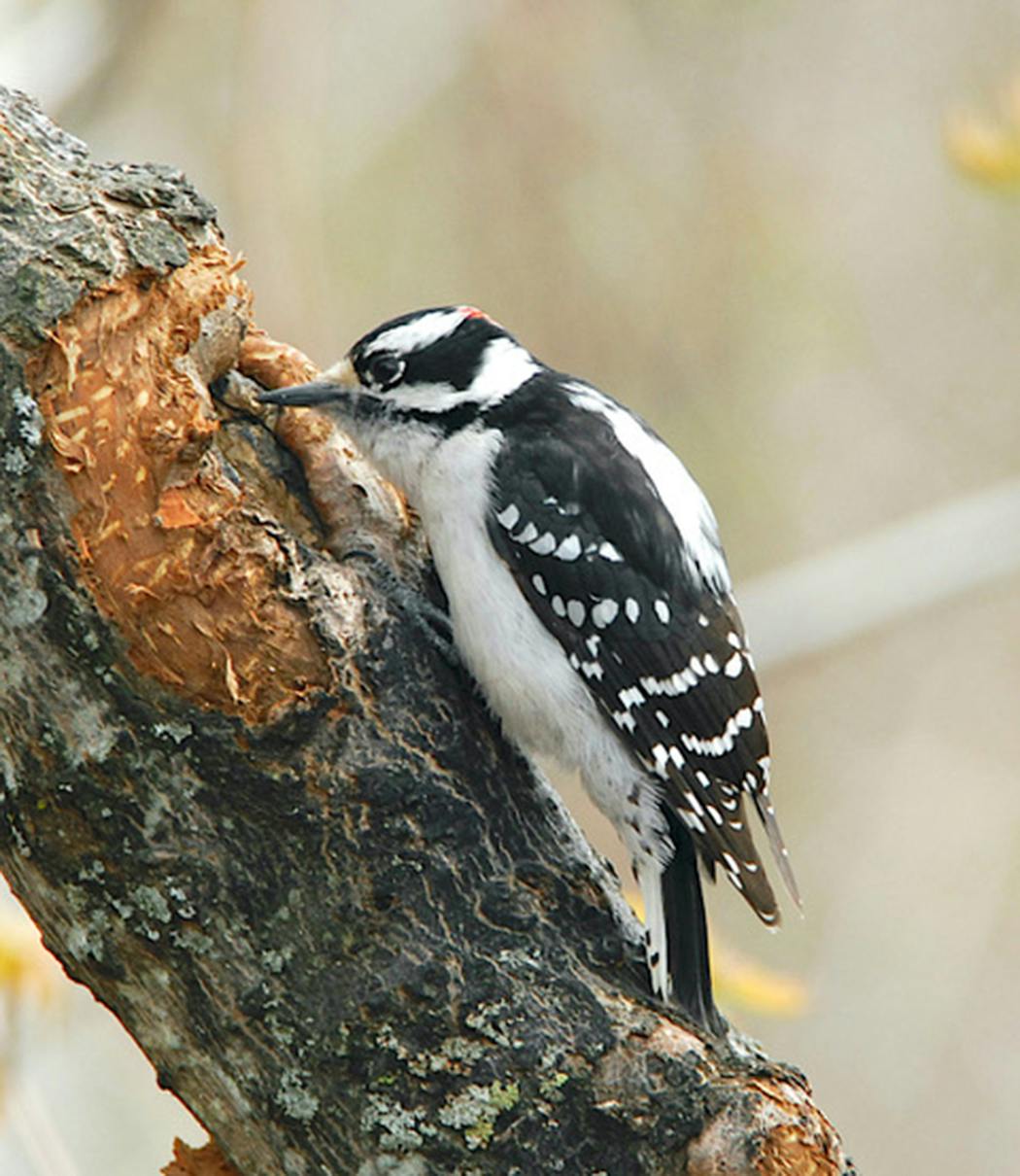Q: I was visiting a local nature center to take photos when I came across an awesome event: A flock of 30 or more robins was fishing for minnows from the lakeshore. Some stood on the ice on shore and grabbed little fish while others flew over the open water and grabbed minnows on the wing. I didn't even know that they ate minnows; is this unusual?
A: I'd only ever heard of robins eating dead minnows discarded by bait shops, but the photos you sent clearly show robins snatching up fish from the water, so I turned to Duluth's Laura Erickson, who's studied robins for many years. "Yes, robins eat little fish and frogs along shorelines," she replied. "They spend a lot of time near water, and they notice movement on the shore and in the water. It's not that often that a school of minnows chances to congregate close to shore right when a group of robins is around, but if one robin noticed the fish, the others would certainly join in. Winter robins are extremely sociable [gathering in flocks] for an important reason — a flock can capitalize on what one of them notices, such as a tree filled with delectable fruit or a group of wiggly fish."
At this time of year food is becoming scarce in the natural world, making birds work harder to find enough food. Robins that have taught themselves to fish have found an excellent source of a high-protein snack.
Finches and grit
Q: I came across a group of goldfinches feeding on the ground in my local park. I thought they ate seeds so am wondering what they were eating along the path.
A: You're right, goldfinches do live on many kinds of seeds, from those produced by weeds to the bounty they find at our feeders. Because seeds often have a hard outer shell, seed-eaters need some help — they search out grit on the sides of paths and roads to help their gizzards grind down the shells.
Messy robins
Q: A flock of robins descended on my heated birdbath recently, and left quite a lot of poop behind. It's unusual in its shape and the orange color, not the usual that I'm used to, and I'm wondering whether the robins are sick.
A: Let's face it, robins can create a big mess. I see the same thing around my heated birdbath after robins have visited, but I don't think it's a cause for concern. Robin poop looks different in winter because their diet is different: They switch from worms to fruit, since this is what's available around here in the cold months, surviving on crabapples, hackberry berries, mountain ash berries, juniper berries, even buckthorn fruits. Their poop change goes along with the dietary change.
Winter doves
Q: I always look forward to the return of mourning doves in the spring because their soft calls remind me that summer is right around the corner. But this year we've had a pair of doves scrounging around under the feeders all winter. Have mourning doves stopped migrating?
A: This seems to be a winter when quite a few birds are not migrating, instead spending the season in backyards and parkland. I've had a number of visits from a brown thrasher and three Northern flickers are visiting the suet feeder each day. Others report towhees and other migrants, and yes, some mourning doves. For whatever reason, your doves did not migrate and if they can find enough food and it doesn't get too cold, they should be fine. Many robins follow this same scenario, and those that survive are first in line for the best territories, ahead of the migrating robins.
Surprising suet fans
Q: Have you heard of bluebirds eating suet? I looked out and saw three of them on my suet feeder recently, with one waiting in a tree.
A: The photo you sent shows a trio of beautiful bluebirds feeding at your suet feeder, a very smart thing for them to do. Suet offers protein and quick energy, and there's not much else available out in nature at the end of winter. Most bluebirds migrate away from Minnesota in the fall, but some remain and survive on berries and whatever else they can find. Much of their diet is made up of insects, and suet is a good substitute.
Live action eagles
Q: You might want to tell your readers that the bald eagles featured on the Department of Natural Resources' webcam are sitting on eggs.
A: Consider them told: dnr.state.mn.us/features/webcams/eaglecam/index.html
The live-action camera, sponsored by the DNR Nongame Wildlife Program, shows bald eagles at their nest in St. Paul. As of early March, the nest held two eagle eggs, with the adult birds trading incubation shifts. You can help this and other nongame projects by making a donation on your state tax return.
Drilling downy
Q: Watching a downy woodpecker on my backyard oak tree this winter, it occurred to me to ask: What they could be pecking for?
A: That small woodpecker was pecking and probing to see if it could turn up some insects, such as wood-boring beetles that remain just under the bark layer. Most of their diet consists of animal matter, such as beetles, weevils, ants, bees, caterpillars and spiders.
Updates from readers
After reading the item about bald eagles strafing ducks on the water, several readers noted that the raptors might sometimes be trying to force a merganser to drop a freshly caught fish. The eagle would then grab the fish and fly away.
Two other readers who each take care of bluebird nest boxes wrote to say they prefer to leave their boxes open for the winter, thereby preventing mice from setting up housekeeping. I'd written that I kept mine closed because downy woodpeckers like to roost in them for the winter. But I agree that mice can be a problem and so can downies — the little woodpeckers chip away at the nest box wood all winter long. Next year I'll leave them open.
St. Paul resident Val Cunningham, who volunteers with the St. Paul Audubon Society and writes about nature for local, regional and national newspapers and magazines, can be reached at valwrites@comcast.net.






